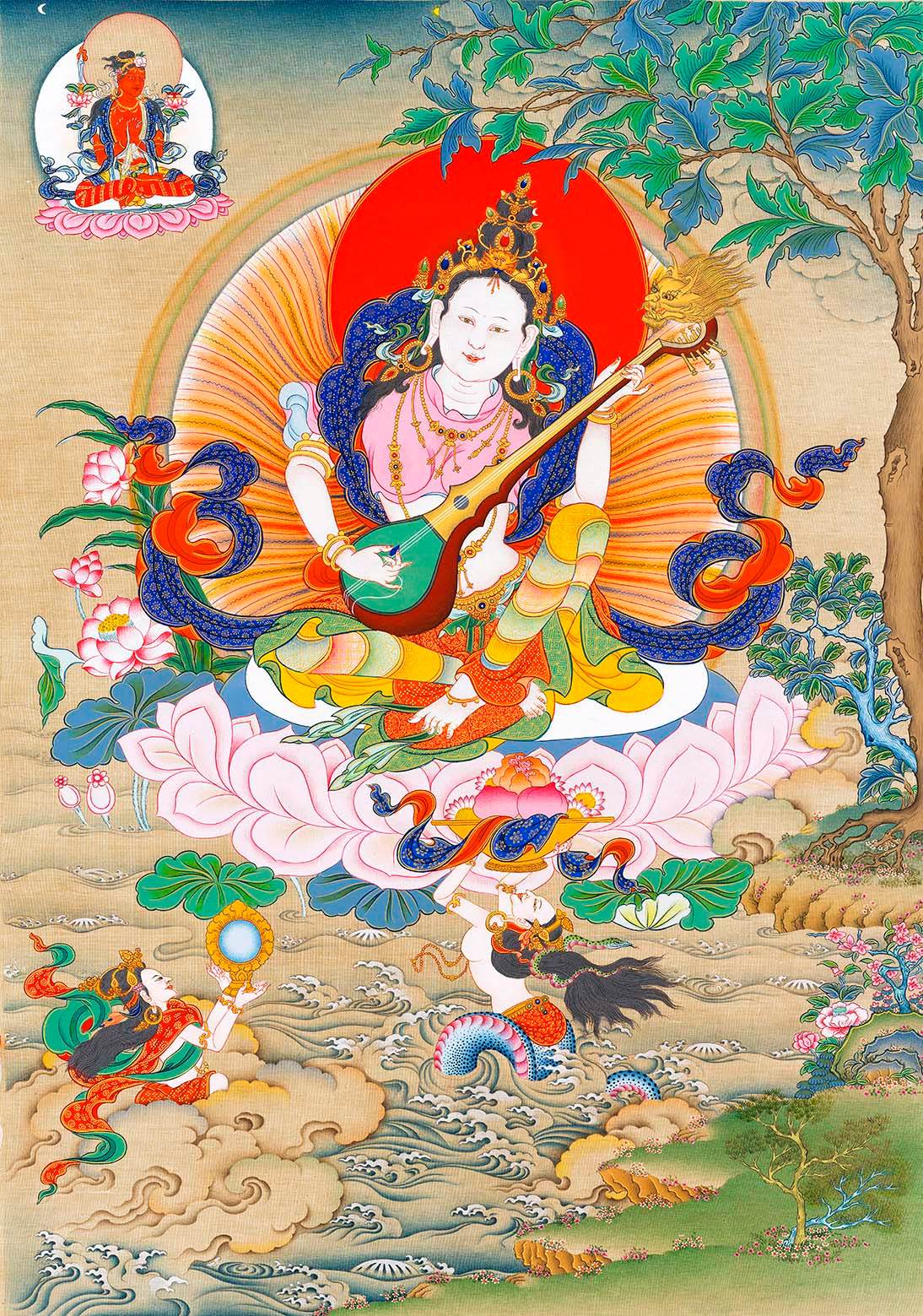
The Melodious Saraswati: A Harmonious Bridge to Wisdom and Art
Saraswati,
the embodiment of wisdom and creative expression, illuminates the path from ignorance to enlightenment through the power of sound and art.

Introduction to Saraswati
Saraswati (Sanskrit: सरस्वती; Tibetan: Yangchenma) is a revered deity in Hindu and Buddhist traditions, celebrated as the goddess of knowledge, music, arts, and wisdom. Unlike fierce or action-oriented deities, Saraswati embodies serene intelligence, eloquence, and the transformative power of creativity. Her name means "the flowing one," symbolizing the effortless flow of wisdom and inspiration.
In Tibetan Buddhism, she is honored as Yangchenma, the "Goddess of Melody," who supports practitioners in mastering communication, deepening their understanding of Dharma, and transcending ignorance through artistic and intellectual disciplines.
The Origins and History of Saraswati
Saraswati’s origins trace back to the ancient Vedic texts of India, where she was initially a sacred river and later personified as a goddess of speech and learning. In Buddhism, she was integrated as a wisdom dakini and a protector of the Dharma. According to legends, her melodies could pacify negative forces, and her teachings helped even the greatest sages refine their expression of truth.
She is often depicted alongside Manjushri (the Bodhisattva of Wisdom), complementing his sword of discernment with her veena (lute) of harmonious resonance.

The Symbolism of Saraswati
Color (White): Represents purity, clarity, and the untainted nature of wisdom.
Posture (Seated in lotus posture): Signifies inner calm and grounded creativity.
Hand Gestures and Attributes:
Veena (Lute): Symbolizes harmony between wisdom and method, and the tuning of the mind to truth.
Book (Scriptures): Represents sacred knowledge and lifelong learning.
Mala (Prayer Beads): Signifies meditation and disciplined practice.
White Lotus: Embodies spiritual awakening amid worldly chaos.

The Saraswati Mantra (Heart Mantra)
The primary mantra associated with Saraswati is:
"Om Aim Saraswatyai Svaha" (ॐ ऐं सरस्वत्यै स्वाहा)
Meaning of the Mantra:
Om: Universal consciousness.
Aim: The seed syllable of wisdom and creative energy.
Saraswatyai: Invocation of Saraswati’s essence.
Svaha: "So be it," an offering of devotion.
Chanting this mantra cultivates clarity of mind, artistic inspiration, and eloquent speech, while removing obstacles to learning.

How to Connect with Saraswati
Meditation: Visualize her playing the veena, enveloping you in waves of luminous white light that dissolve confusion and ignite creativity.
Mantra Recitation: Chant "Om Aim Saraswatyai Svaha" 21 or 108 times daily, especially before studying or engaging in artistic work.
Offerings: Offer white flowers, incense, or recite poetry and music in her honor. Engaging in creative acts itself is a form of devotion.
Conclusion
Saraswati teaches that wisdom is not merely abstract—it is expressed through art, speech, and mindful creation. She bridges the mundane and the divine, showing how beauty and knowledge can become pathways to enlightenment.
Whether you seek inspiration, academic success, or deeper insight into the Dharma, invoking Saraswati can awaken the river of wisdom within.
May the music of Saraswati guide your mind to luminous clarity!
Have you ever chanted Saraswati’s mantra or engaged in artistic practices as a form of meditation?
Share your stories in the comments below!







1 comentariu
0qa3rq